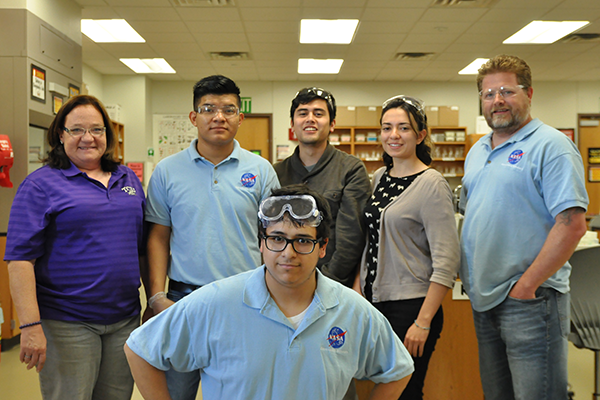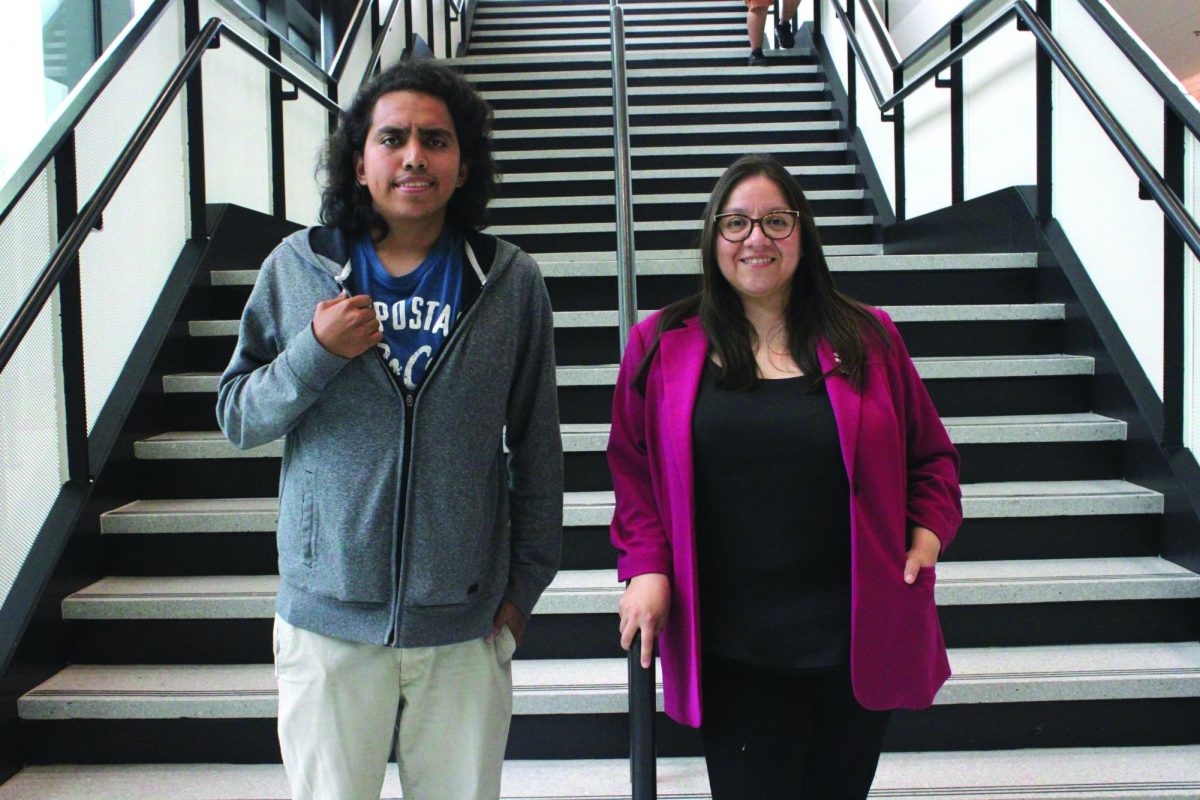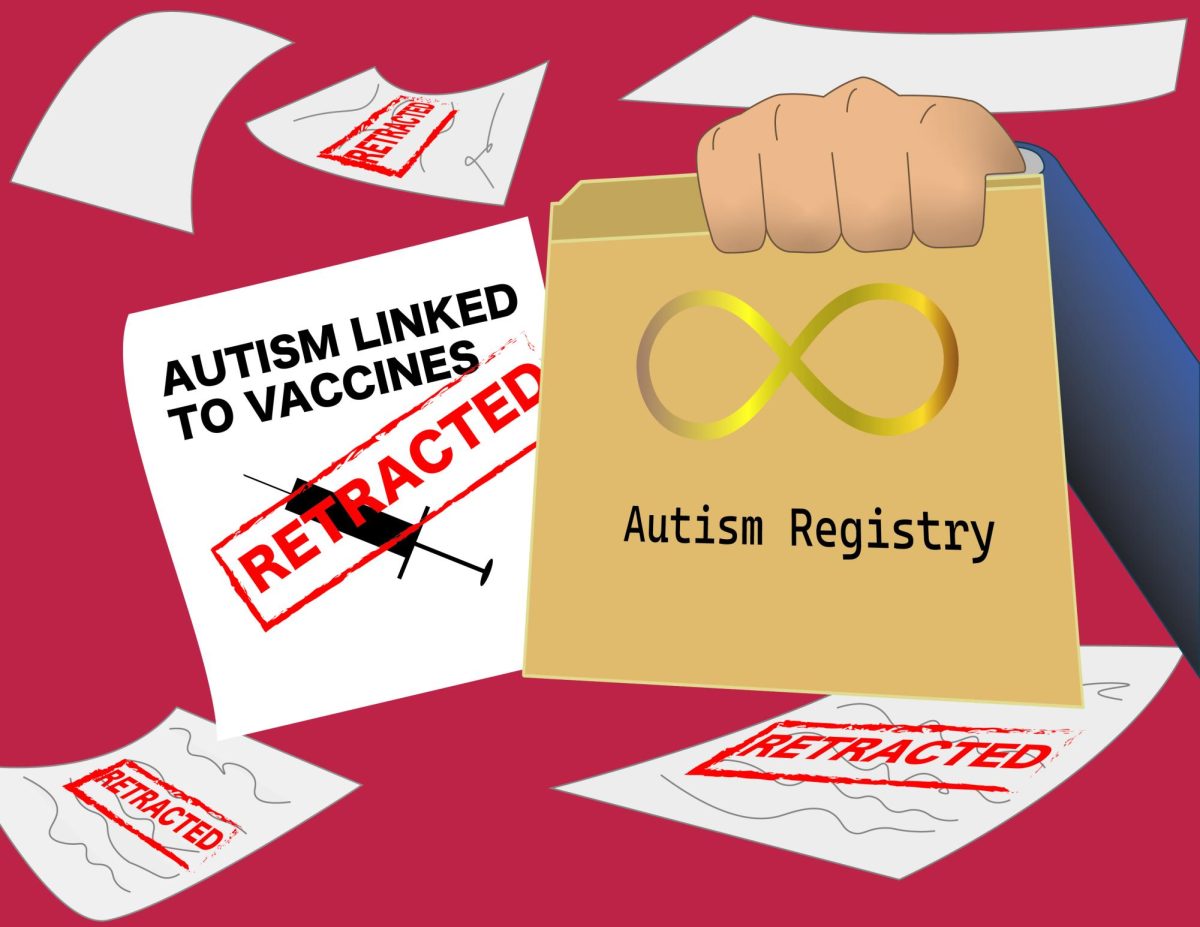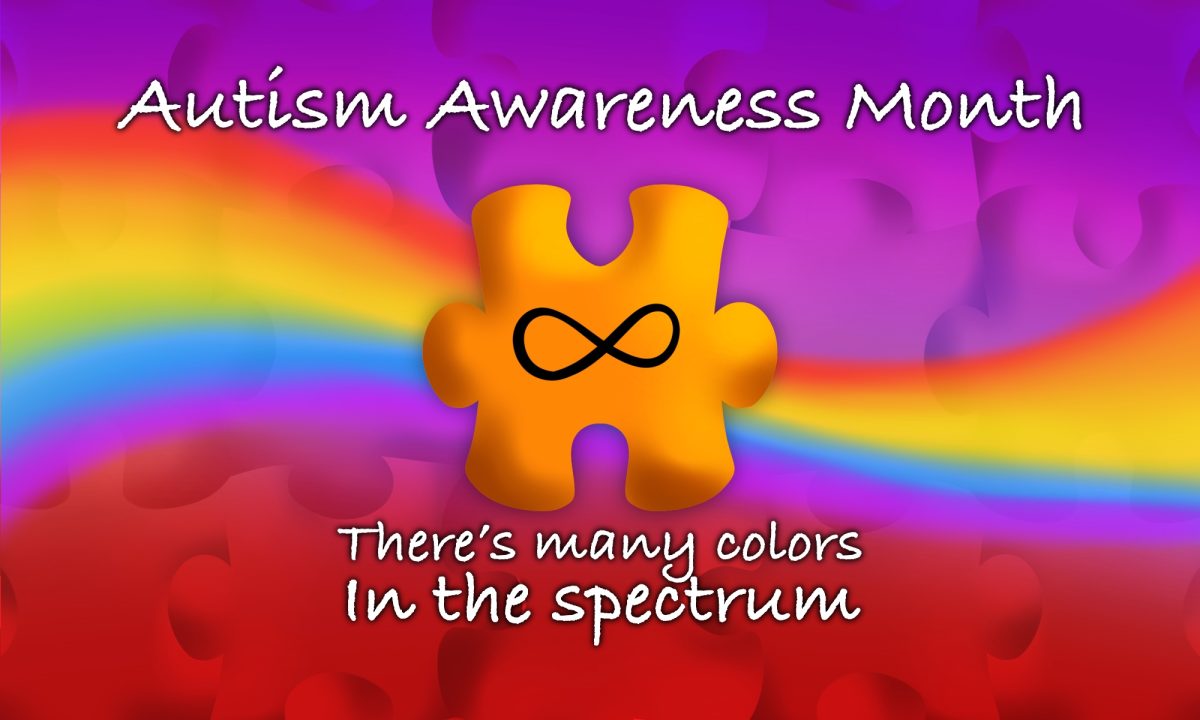
By BILLY DENNIS
Seven Eastfield students are part of a select DCCCD team that will take the ride of a lifetime this summer in the NASA 2014 Reduced Gravity Education Flight Program.
The students will conduct a complex scientific experiment in a microgravity environment during the week-long program from July 11 to July 19 at the Lyndon B. Johnson Space Center in Houston.
The team, officially named the El Harve-Stars, will include seven students from Eastfield and one from El Centro. Eastfield’s Eduardo Aguirre, an electrical engineering major, will lead the team. The remaining members are Salvador de Leon, Clara Oliva, Samuel Rodriguez, Stephen Todd Stovall, Jasmine Chavez, Valeria Lujan and Eric Edwards.
This is the first time DCCCD students have had the opportunity to participate in such a high-profile experiment.
“Being on the team means going above and beyond what is normally expected at DCCCD,” Aguirre said. “The challenge given is unlike anything else given in the classroom. NASA flight teams normally consist of university upperclassmen, but we are a community college team, so we have to be willing to do that level of work.”
The experiment will be conducted aboard the famous “Vomit Comet,” a modified Boeing 727-200, which reaches a high altitude before nose-diving back to earth, creating a weightless environment. The team will conduct their experiment in these extreme conditions.
The team will attempt to crystallize sodium acetate in super-saturated sodium. This experiment has never been performed by anyone in a microgravity environment. Usually the growth of crystals takes weeks, but the El Harve-Stars have discovered a way to achieve this in seconds. This growth is due to the introduction of a seed crystal into the super-saturated solution.
The objective of the experiment is to discover how the rapid crystallization of these compounds will react when grown in microgravity.
The results will be compared to the results of the same experiment conducted on the ground. With their hypothesis, the students expect to see a higher quality crystal with no deformations caused by gravity.
Dr. Kelly Soich, director of programs and chief payload specialist at Waypoint 2 Space, is the team’s mentor. He works for a research education site at the Lyndon B. Johnson Space Center and volunteered to work with students interested in microgravity.
“My role as mentor is to basically help them get the engineering documents prepared for the flight, and be a sounding board for them when it comes to integration and hopefully getting their experiment to be successful,” Soich said.
While this may be just a college scientific experiment, there are many who feel the experiment could produce results applicable to the real world.
“From a practical application, there’s always the ability of having some grow in microgravity,” Soich said. “I think there’s always practical applications if somebody can find a use for it.”
Aguirre said dedication is required for students pursuing degrees in a STEM-related field.
“Being on the team means staying on track with the project even while holding down classes and jobs,” he said. “It means skipping parties and telling friends you cannot go to the movies with them. It means attending Friday and weekend meetings, and never complaining about it. Basically, it means sacrifice.”
As with many scientific experiments, the team was thrown a curveball when it learned the experiment had to be conducted using “double containment,” a precautionary measure NASA put in place due to the extreme environment in which the team will be working.
This means the jar in which the experiment will be conducted must be placed inside another layer of containment, a box specially designed by NASA. The question became how to insert the seed crystal into the sealed solution without opening the jar. Undaunted, the team sprang into action with a utilitarian solution.
“Using magnets, we are able to hold and release the seed crystals on command,” Aguirre said. “I think we came up with a pretty good answer. In problems where every little additional item carries enormous costs, the best solution is often the simplest.”







